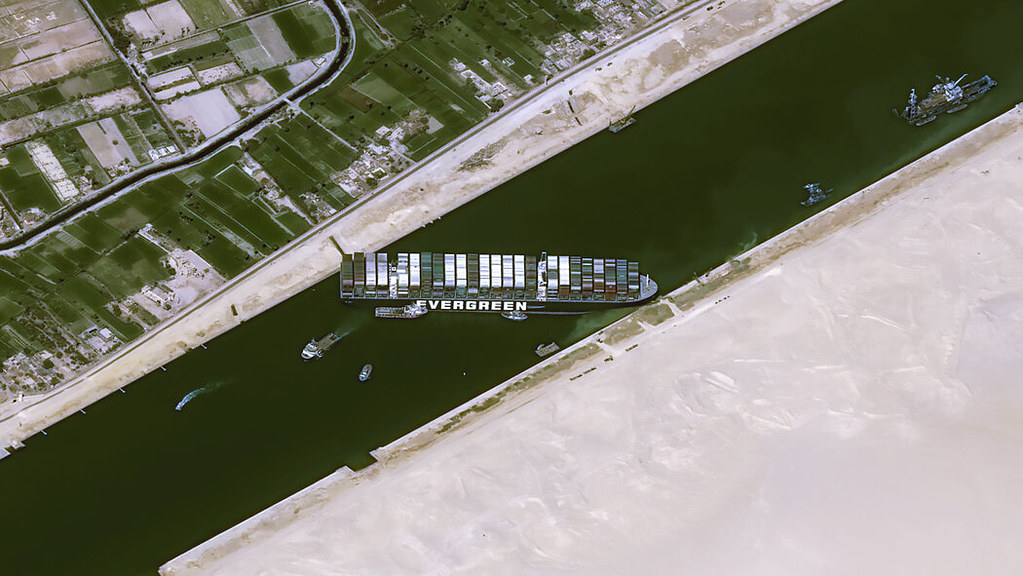While commodity prices soar, is it worthwhile to consider investing in the logistics, maritime, and shipping industrial sectors, or is it too risky?
One of Europe's largest discount retailers has set up its own company, Tailwind Shipping Lines, to respond to container shortages. With annual profits of nearly 3 billion euros, the group has plenty of the necessary capital. The objective is to ensure the smooth flow of delivery chains for the group's supermarkets. On the other hand, with sanctions on Russian oil and gas, we could see more tankers crossing the oceans, containing liquefied natural gas (LNG).
(Container Ship “Ever Given” stuck in the Suez Canal, Egypt March 24th, 2021, Creative Commons)
Here are a few reasons to invest in that logistics-driven sector:
- container rates are still high, supported by energy prices and demand recovery;
- when demand is growing for goods, international trade through maritime routes tends to flourish;
- following the reduction of vessels in Shanghai due to China’s zero-COVID policy and thus forced lockdowns within one of its major economic centers, there was a slowdown that may give some opportunities to enter the transportation market.
The volatility in that market is high since shipping rates can be very variable, as can the shares of ship owners. Therefore, it is important to highlight that this market is a high-risk area that relies on many different and often unpredictable variables. Among the recent events that have marked the history of maritime transportation, there was the famous Evergreen’s carrier ship that got stuck in the Suez Canal. You probably all remember that, as it paralyzed the maritime flow for days and even provoked worldwide supply-chain disruptions.
So, in my next article to be published later next week, I have selected a list of products that I will provide with stocks that will help you diversify your portfolio and optimal entry levels to consider (for our subscribers).
Related: Crude Oil: Between Slowing Demand and Shrinking Supply


